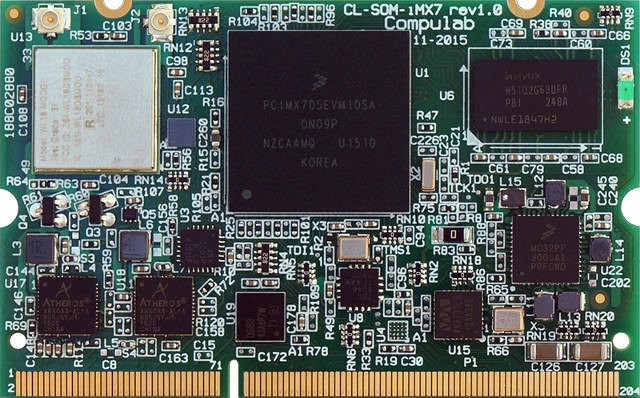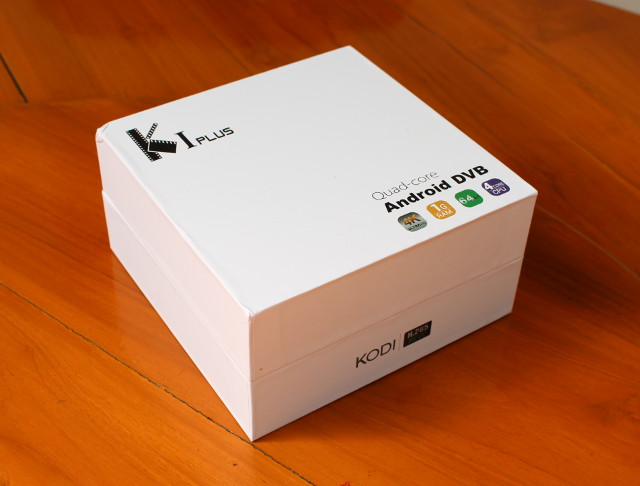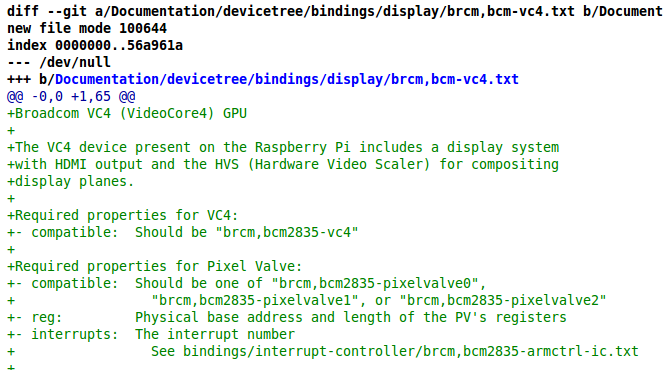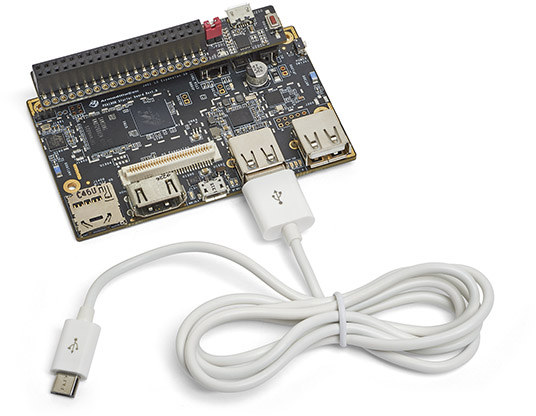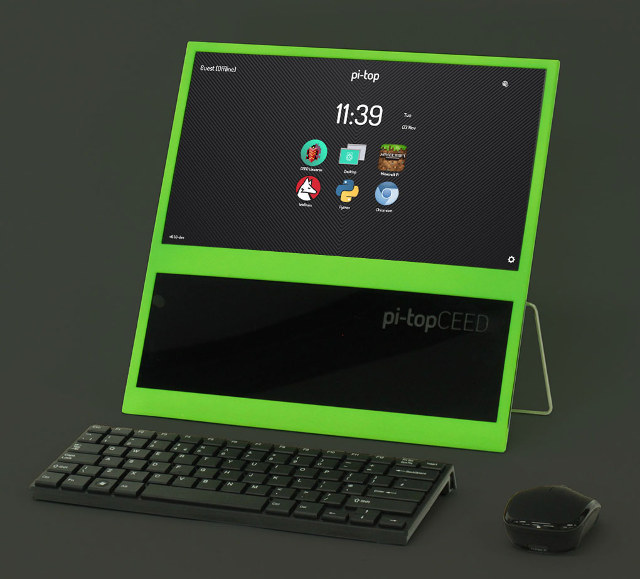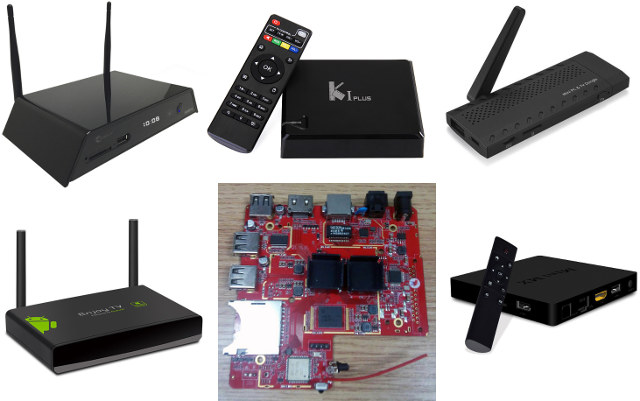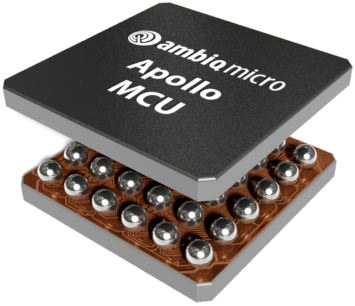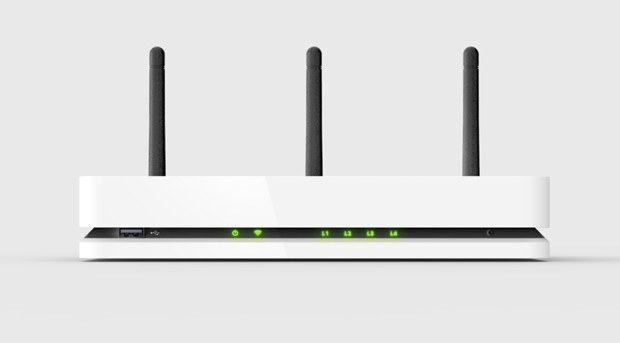After a few years of speculations and developments about i.MX7 and i.MX8 processors, Freescale announced Freescale i.MX7 family this summer. The new processors are based on one or two Cortex A7 cores coupled with a Cortex-M4 MCU for real-time tasks, and are a low power alternative to Freescale i.MX6 processors. But so far I had only seen a few announcements such Toradex i.MX7 SoM or Freescale 96Boards, without any product actually shipping, and Compulab claims to the first to market with a Freescale i.MX7 system-on-module, namely their CL-SOM-iMX7 SoM which will ship in quantities in early January 2016. CL-SOM-iMX7 system-on-module specifications: SoC Freescale i.MX 7Solo single core Cortex-A7 @ 800MHz with NEON SIMD and VFPv4 + ARM Cortex-M4 @ 200Mhz Freescale i.MX 7Dual dual core Cortex-A7 @ 1GHz with NEON SIMD and VFPv4 + ARM Cortex-M4 @ 200Mhz System Memory – 256MB to 2GB DDR3L-1066 Storage – 128MB – 1GB […]
Videostrong K1 Plus Amlogic S905 Android TV Box Unboxing and Teardown
Many Amlogic S905 TV boxes have been announced, and thanks to Videostrong, I’ve received my first Amlogic S905 device for review with their K1 Plus media player (aka KI Plus). Today, I’ll start by listing the specifications, before taking a few pictures of the device and its board. with the full review following up in a few days. Videostrong K1 Plus Specifications K1 Plus is one of the entry level models with 1GB RAM and 8GB storage by default: SoC – Amlogic S905 quad core ARM Cortex-A53 @ up to 2.0GHz with penta-core Mali-450MP GPU @ 750 MHz System Memory – 1GB DDR3 Storage – 8GB NAND flash (4 to 32GB optional) + micro SD card slot Video Output – HDMI 2.0 up to 4K @ 60Hz with HDCP 2.2 support, and 3.5mm AV jack Audio – HDMI, AV (stereo), optical S/PDIF Video Codecs – 10-bit H.265 up to 4K60, […]
Raspberry Pi’s VideoCore 4 GPU Driver Added to Linux Mainline in Kernel 4.4
While your x86 and AMD64 computer will usually boot with Linux mainline without issues, most ARM boards and device won’t, and many of the ones that do boot only support headless mode, and limited functionalities. The Raspberry Pi had been supporting HDMI output with a simple framebuffer for a while, but a developer working on the Videocore 4 (VC4) GPU found inside Broadcom BCM2835 and BCM2836 processors, has recently submitted a patchset to add VC4 GPU to Linux mainline that should make it to Linux 4.4. The commit message does mention some features are still missing, but it’s a start: This pull request introduces the vc4 driver, for kernel modesetting on the Raspberry Pi (bcm2835/bcm2836 architectures). It currently supports a display plane and cursor on the HDMI output. The driver doesn’t do 3D, power management, or overlay planes yet. Via Golem and Sanders. Jean-Luc Aufranc (CNXSoft)Jean-Luc started CNX Software in […]
AndroMeda Box Edge Brillo Starter Board Features Marvell IAP140 Processor, 96Boards Form Factor
Google announced Brillo, a new operating system based on Android and targeting the Internet of things, at the end of October. The company also disclosed that ARM, MIPS and x86 architectures were supported via respectively TechNexion Pico-i.MX6UL system-on-module and PICO-DWARF baseboard, MIPS Creator CI-40 board, and Intel Edison development board. A few days later, Marvell announced Andromeda Box, an IoT platform supporting Brillo and Weave, based on IAP140, a quad-core ARM Cortex A53 application processor for the “Edge” version, and ARMADA 385 dual core Cortex A9 processor for the “Connect” version, but without the full details. AndroidMeda Box Edge is now listed on Solid Run and Arrow websites, where it is sold for $74.99. If the board looks familiar, it’s because it clearly follows 96Boards form factor, but instead of officially being supported by Linaro, it has been designed specifically as a Google’s Brillo development platform with the following specifications: […]
$99 pi-topCEED Raspberry Pi 2 Based Desktop Computer Includes a 13.3″ Display (Crowdfunding)
Pi-Top, a laptop kit based on Raspberry Pi 2 board and a 13.3″ display, and which cost about $299.99 with the board, and had a successful crowdfunding campaign despite the price nearly matching equivalent laptops on the market. CEED is now back on Indiegogo with pi-topCEED desktop computer also based on a Raspberry Pi 2 board and a 13.3″ display, but which much more aggressive pricing, as the kit could be yours for $99 with the board, or $70 without, and shipping was included to the few countries I checked out. pi-topCEED Specifications: SoC – Broadcom BCM2836 quad core Cortex A7 processor @ 900MHz with VideoCore IV GPU System Memory – 1GB LPDDR2 Storage – micro SD card slot Display – 13.3″ HD LCD screen screen with eDP 1.2 interface; 1366×768 resolution; 262K colors; 60Hz refresh rate; 3W power consumption. Video & Audio Output – HDMI (connected to display board […]
List of Amlogic S905 TV Boxes and Sticks
Rockchip RK3368 TV boxes looked promising at the end of the summer, but ended up being disappointing, not because of their expected lower performance compared to RK3288, but simply because they could not deliver on their main selling point: 4K H.265 / H.264 video playback, and the sheer number of issues with the first devices selling for nearly the same price as equivalent Rockchip RK3288 devices. Rockchip RK3368 will soon have a worthy competitor with Amlogic S905, which won’t deliver amazing benchmark scores, but looks promising for its 4K 10-bit HEVC video playback, HDMI 2.0 and HDCP 2.2, and historically Amlogic delivers better video playback than Rockchip. The first Amlogic S905 TV boxes should start shipping by the end of the month, and prices are starting very low, just over $40, thanks to competition between the many manufacturers launching devices based on the new Amlogic SoC. That’s why I’ve decided […]
Ambiq Micro Apollo Low Power MCUs Promise Cortex M4F Performance at Cortex M0+ Energy Efficiency
Ambiq Micro is a US company founded in 2010 that focuses on “extremely low power” semiconductors leveraging their patented Subthreshold Power Optimized Technology (SPOT) platform. Earlier this year, they announced their first low power Cortex-M4F MCU Apollo family with claims of 5 to 10 times lower power consumption compared to other micro-controllers with the same performance. According to an EETimes article, they’ve at least partially backed their claims with a live demonstration at ARM TechCon 2015. Before checking out the test results, let’s have a look at the main features of Apollo MCU family: 32-bit ARM Cortex-M4F processor @ up to 24 MHz, with FPU, and wake-up interrupt controller with 12 interrupts Up to 512KB flash, 64-KB low-leakage RAM “Rich set of timing peripherals” Peripherals I2C/SPI master; I2C/SPI; UART; 10-bit, 13-channel, 1MS/s ADC Temperature sensor with ±2°C accuracy Voltage Range – 1.8 to 3.8V Power Consumption: active mode: 30µA/MHz (executing […]
Turris Omnia Open Source Hardware Router’s Crowdfunding Campaign is Up
CZ.NIC is a non-profit organization running the .cz domain of the Czech Republic, and as part of their activities they are also making open source hardware routers such as Turris 1.1 based on Freescale QorIQ P2020 communication processor. I’ve previously written about Turris Omnia router based on Marvell ARMADA 385 dual core processor, and the organization has now launched an Indiegogo campaign where you can get the bare board for $99, and a complete router with WiFi modules, power supply, cables, and enclosure for $189, shipping not included. Turris Omnia router specifications: Processor – Marvell ARMADA 385 (88F6820) dual core ARMv7 processor @ 1.6 GHz with 1MB L2 cache System Memory – 1GB DDR3 Storage – 4GB flash, mSATA slot Connectivity 5x Gigabit Ethernet LAN ports 1x Gigabit Ethernet WAN port 1x SFP cage 3×3 MIMO 802.11ac, 2×2 MIMO 802.11 b/g/n (Included in router perk, not with bare board) SIM […]


